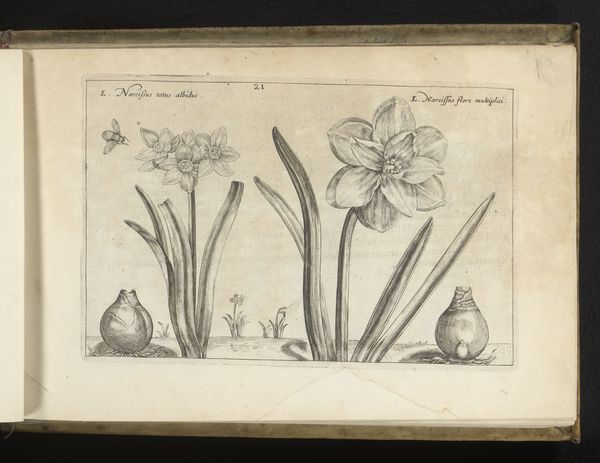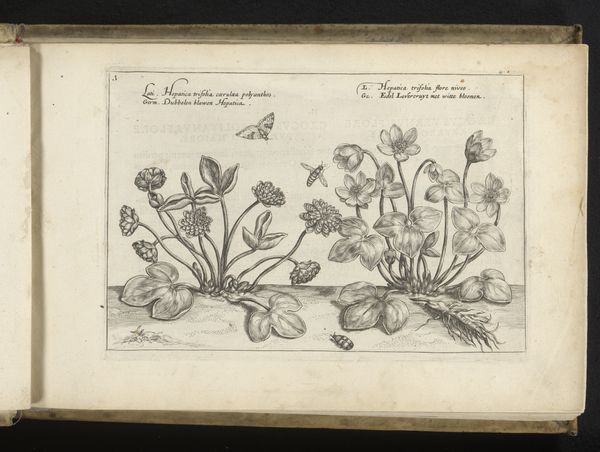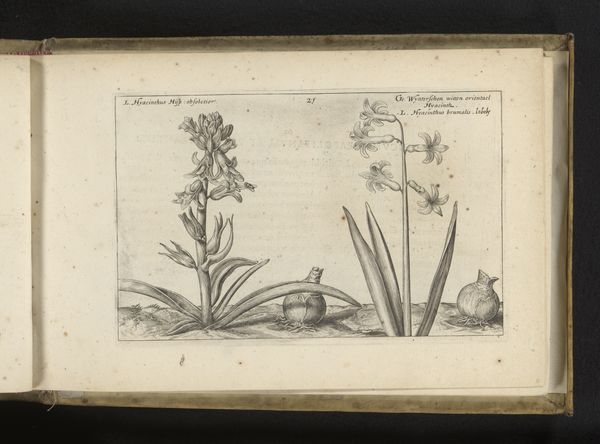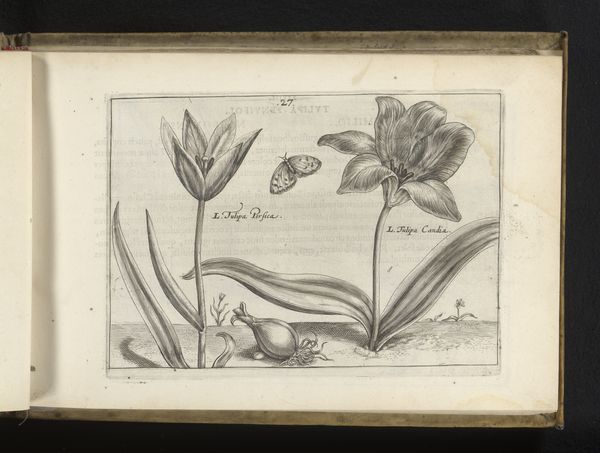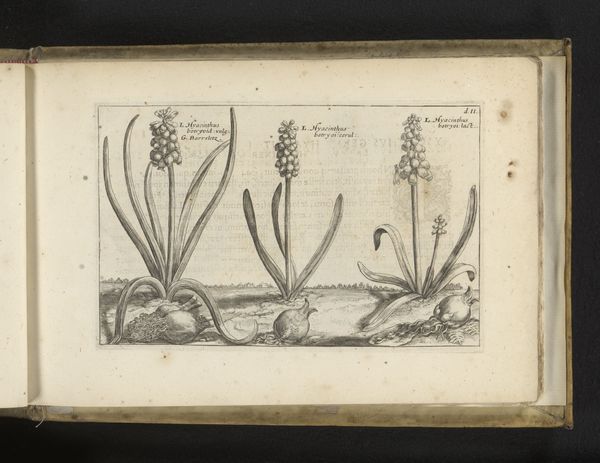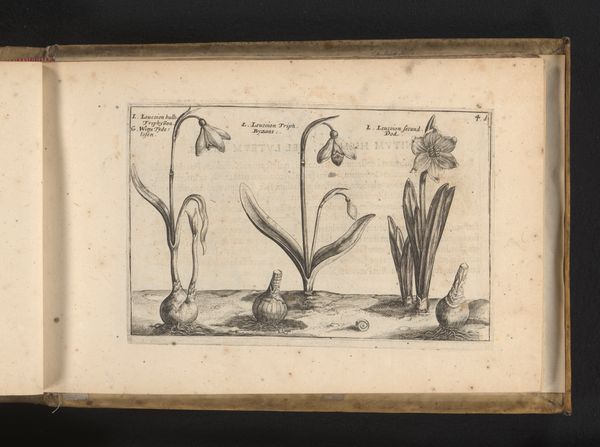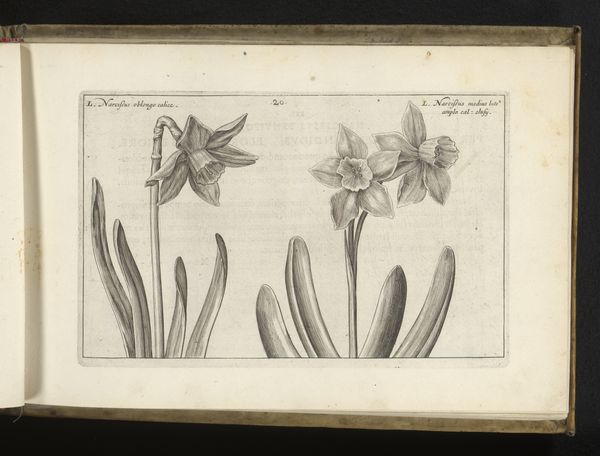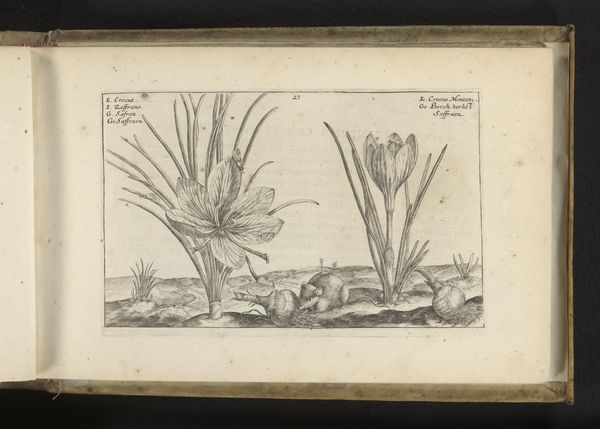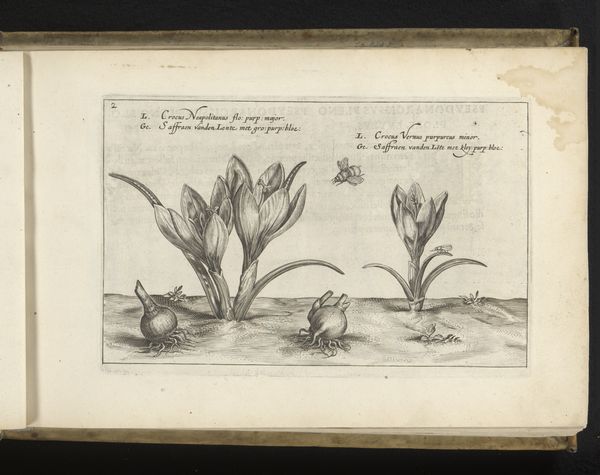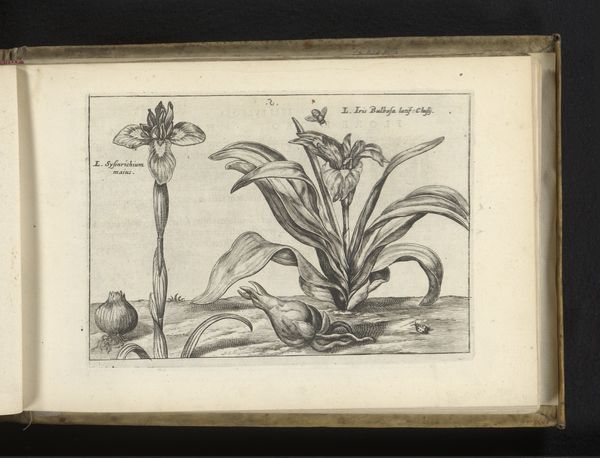
drawing, print, engraving
#
drawing
#
aged paper
#
toned paper
#
light pencil work
# print
#
sketch book
#
flower
#
personal sketchbook
#
pen-ink sketch
#
pen and pencil
#
line
#
pen work
#
sketchbook drawing
#
northern-renaissance
#
sketchbook art
#
engraving
Dimensions: height 137 mm, width 208 mm
Copyright: Rijks Museum: Open Domain
Curator: At first glance, this engraving of wild daffodils feels very much like a delicate study from nature, rendered with careful lines. Editor: I see that, but also something of a commentary on cycles. The bulbs and decaying matter are right there beside the blooming flowers, hard to ignore. Curator: That is true. This is "Wilde narcissen," or "Wild Daffodils," a work by Crispijn van de Passe the Younger, dating to 1617. He worked with both pen and pencil to capture these botanical details. It’s held in the collection of the Rijksmuseum. Editor: The placement feels significant, especially when we consider the context of the Dutch Golden Age and its intense engagement with naturalism. Are we meant to consider themes of mortality and beauty? Curator: It’s quite possible. Flowers often appear as vanitas symbols, reminders of life’s fleeting nature. The meticulousness could speak to a desire to preserve something ephemeral. And perhaps the scientific impulse coexisting with the moral one, characteristic of the era. Editor: Yes, but I’m thinking beyond personal morality. The bulbs feel particularly loaded to me, almost accusingly. We need the rot for rebirth. Curator: I see what you mean. There’s also something rather egalitarian about showing the entire process so frankly—not just the perfected bloom. Editor: Right! There's a political element to observing, documenting and representing our ecological existence—then and now. It's almost a radical act of observation, asking us to consider where we are positioned within these biological systems of use and extraction. Curator: Fascinating. Looking closely, there’s something particularly tender in the light pencil work defining the petals, contrasting with the harsher lines around the bulbs. The symbolic register seems to overlap both secular and moral dimensions, suggesting perhaps the potential for continuity, or a subtle interrogation of our intervention into natural process. Editor: Definitely food for thought. Van de Passe gives us not just a flower, but an ecosystem reflecting humanity's relationship with our environmental. Curator: Thank you. It’s prompted me to look at the print through a fresh lens. Editor: Agreed. Seeing it as both scientific illustration and call to social responsibility. A complex legacy indeed.
Comments
No comments
Be the first to comment and join the conversation on the ultimate creative platform.
